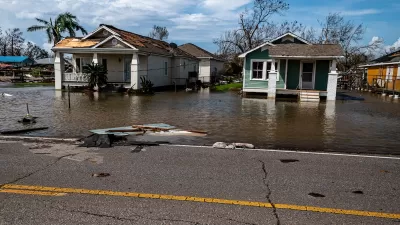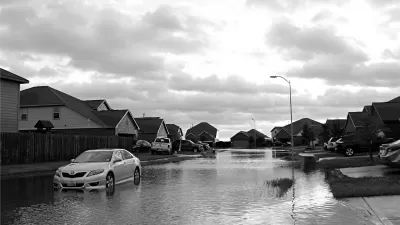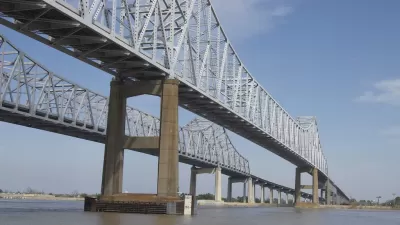This article from The Christian Science Monitor looks at how development, farm practices, and population growth have increased the risk of flooding.
"Flooding in the Midwest seems to be getting worse."
"Researchers and other observers say such episodes are likely to worsen as efforts to protect vulnerable communities are outpaced by factors that increase the risk of flooding, including the ongoing practice of building on river flood plains."
"Most cities and towns in the Midwest lie along rivers and streams. Hydrologists and planners say that the cumulative effects of decades of land-use choices have gradually increased the likelihood of flooding. Throughout Iowa, Illinois, and Indiana, for example, much farmland is drained by buried tiles that carry rainwater quickly away from the fields into streams and rivers. Population growth, bringing new highways and subdivisions, increases runoff. And communities keep building on flood plains, which not only puts new development at risk but also reduces the amount of flood plain available to absorb floodwater."
"In many communities, levees protect low-lying neighborhoods and farmland. 'America has had a love affair with levees since the 1800s,' says Marceto Garcia, professor of civil and environmental engineering at the University of Illinois at Champaign-Urbana. But levees cause new problems by confining rivers and increasing flooding in other stretches."
FULL STORY: Why flooding worsens

Study: Maui’s Plan to Convert Vacation Rentals to Long-Term Housing Could Cause Nearly $1 Billion Economic Loss
The plan would reduce visitor accommodation by 25,% resulting in 1,900 jobs lost.

North Texas Transit Leaders Tout Benefits of TOD for Growing Region
At a summit focused on transit-oriented development, policymakers discussed how North Texas’ expanded light rail system can serve as a tool for economic growth.

Why Should We Subsidize Public Transportation?
Many public transit agencies face financial stress due to rising costs, declining fare revenue, and declining subsidies. Transit advocates must provide a strong business case for increasing public transit funding.

How to Make US Trains Faster
Changes to boarding platforms and a switch to electric trains could improve U.S. passenger rail service without the added cost of high-speed rail.

Columbia’s Revitalized ‘Loop’ Is a Hub for Local Entrepreneurs
A focus on small businesses is helping a commercial corridor in Columbia, Missouri thrive.

Invasive Insect Threatens Minnesota’s Ash Forests
The Emerald Ash Borer is a rapidly spreading invasive pest threatening Minnesota’s ash trees, and homeowners are encouraged to plant diverse replacement species, avoid moving ash firewood, and monitor for signs of infestation.
Urban Design for Planners 1: Software Tools
This six-course series explores essential urban design concepts using open source software and equips planners with the tools they need to participate fully in the urban design process.
Planning for Universal Design
Learn the tools for implementing Universal Design in planning regulations.
City of Santa Clarita
Ascent Environmental
Institute for Housing and Urban Development Studies (IHS)
City of Grandview
Harvard GSD Executive Education
Toledo-Lucas County Plan Commissions
Salt Lake City
NYU Wagner Graduate School of Public Service





























